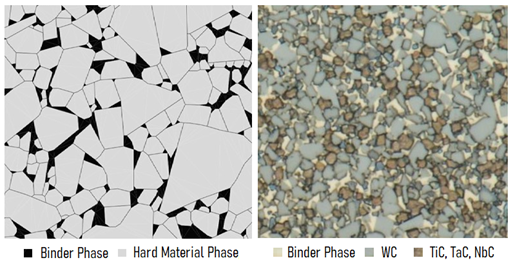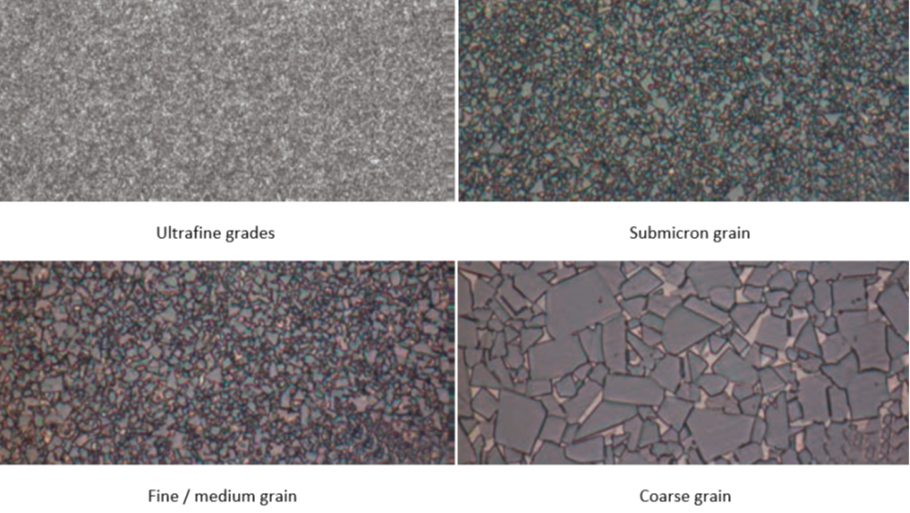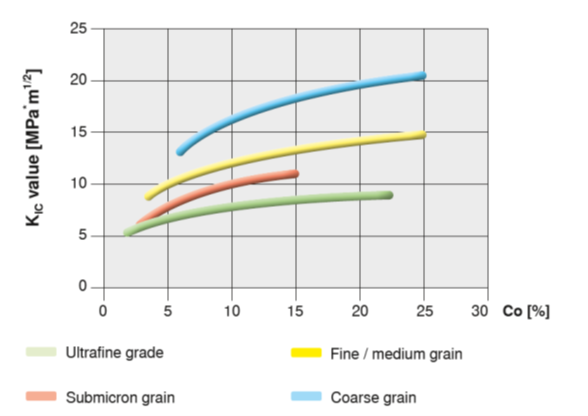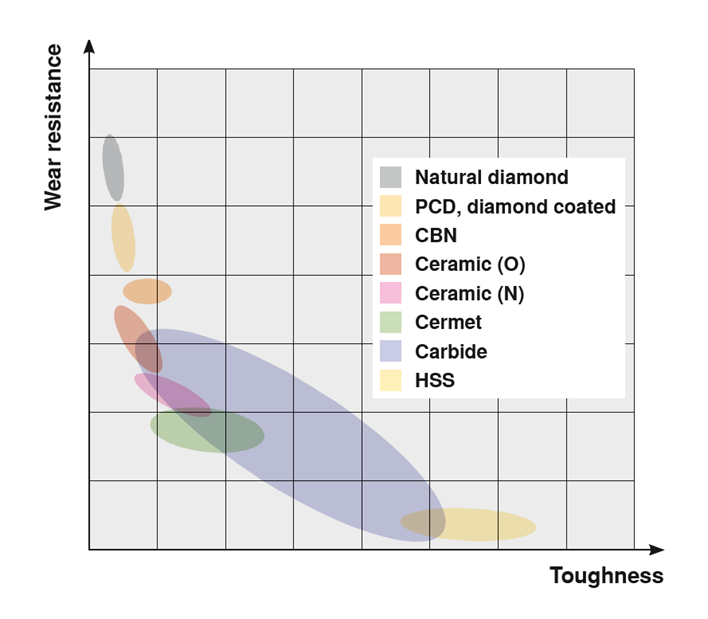What is ceme nted carbide?
Cemented carbide is a powder metallurgical material consisting of:
- hard-particles of tungsten carbide (WC) sometimes with a possible addition of Ti, Ta, Nb carbides and nitrides
- a binder metal, cobalt (Co), could also be Nickel (Ni)

What is grade?
Grade represents the hardness or toughness of cemented carbide product and is determined by the mixture of ingredients which make up the substrate.
WC has a better abrasive wear resistance while addition of Ti, Ta or Nb carbides (gamma phase) has a better hot hardness. Gamma phase is less reactive at elevated temperatures so that it is often seen in grades where the cutting temperature can get high.
For cutting tools and wear protection, tungsten carbide (WC) is generally used as a hard carbide phase and cobalt (Co) as metal binder (binder phase). The reason for this is that applying this combination the best physical and mechanical properties can be obtained.
The most important parameters for determination of the carbide properties are the binder content and the average grain size of the hard material phase.
|
Classification of
|
|
|
Average
|
Classification |
|
< 0.2 |
nano |
|
0.2 - < 0.5 |
ultrafine |
|
0.5 - < 0.8 |
submicron |
|
0.8 - < 1.3 |
fine |
|
1.3 - < 2.5 |
medium |
|
2.5 - < 6.0 |
coarse |
|
> 6.0 |
extra-coarse |
The classification of carbides according to grain size corresponds to the recommendations of the Powder Metallurgy Association

The graphic illustrations below show that the mechanical properties of the carbide mainly depend on the binder content (Co) and the WC grain size.
Hardness, i.e. wear resistance, increases inversely proportional to the fracture toughness. This means that the harder the material the more it reacts impact stress (the ‘impact resistance’ parameter, which cannot be precisely defined, correlates with the fracture toughness of the material).
On the other hand, the transverse rupture strength does not directly depend on the hardness but rather on the WC grain size and the cobalt content. The adhesive wear (tendency to stick), however, decreases with the grain size and the cobalt content of the carbide used. The list of the mentioned interdependencies, which could be extended at will for other wear and failure mechanisms, show that it is only possible to choose the correct carbide grade following a systematic procedure and/or based on experience with similar applications.



Advantages of cemented carbide:
- does not wear so quickly as it is harder
- resists even high temperatures
- wherever tools or components are exposed to high wear
- improved quality of the tools and parts
- longer tool life
- improved security
Cemented carbide in comparison to other materials:
- Cemented carbide: enormous flexibility thanks to composition, can be designed either with higher toughness or higher wear resistance depending on the application. Range of applications varies extremely for cemented carbide and offers the greatest scope
- Diamond/PCD: hardest existing material, but characterized by high fracture toughness
- CBN: high hardness, low toughness
- Ceramic: very low density, lighter than cemented carbide and heat-conducting, excellent hardness, low toughness
- Cermet: high hardness, combines the hardness of cemented carbide and ceramic, but less tough
- Steel: high toughness, but low hardness
Cemented carbide covers a wide range of applications, as can be seen in the following chart.








